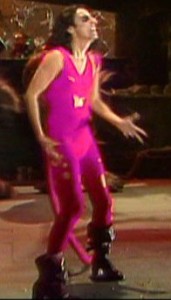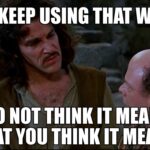 Often times, the trickiest part of screenwriting isn’t finishing your first draft — it’s paring the dang thing down to 115 pages or so! Every line becomes critical. It’s therefore key that we don’t use any superfluous transitions.
Often times, the trickiest part of screenwriting isn’t finishing your first draft — it’s paring the dang thing down to 115 pages or so! Every line becomes critical. It’s therefore key that we don’t use any superfluous transitions.
I’m lookin’ at you CUT TO: !
Transitions (directions for the visual movement between scenes), like CUT TO:/DISSOLVE TO:/etc., should be used infrequently (if ever) these days in your script.
Fair Use
You should only feel the need to use CUT TO: in instances where the movement from scene to scene does not follow a logical flow, and may cause confusion for the reader. One legitimate use would be if your script involves parallel action that takes place in separate locations.
Another legitimate use would be if you’re jumping around in time (where the action isn’t a FLASHBACK). I read a script recently where CUT TO: was used very effectively to jump between several couples being interviewed by the same psychiatrist over the course of a day.
Questionable Use
You’ll also see CUT TO: being used where the dialogue or action of one scene ends abruptly and transitions us to the next scene (indicating their connectedness) — often to humorous effect.
For example:
COOPER
It’ll be a cold day in hell before you’ll see me in that!
CUT TO:
INT. THEATER – NIGHT
Cooper, red-faced, squirms on center stage in a tight pink unitard.
It’s not technically incorrect to use CUT TO: in this way, however, in my opinion it’s unnecessary. The above scene would be just as comprehensible and would work just as well (or better?) without the CUT TO:
So if your script is running long, I say cut the CUT TO: in the above type of scenario (or better yet, don’t use it in the first place). You’ll save two lines. Carry that forward through your entire script and you may save a precious page or more.
What’s your take on CUT TO: ? For me, if it’s used too often, it just stands out like… a pink unitard.





I agree on the use of CUT TO: I’m not sure why people feel the need to superfluously use that one above all others, but I see it really really often in spec scripts. It’s a camera direction, and just like all others, it A. shouldn’t be used at all really, and B. is unnecessary given the fact that if you’re cutting to a new location, then the location header should take care of that anyway.
Glad you agree Brian. Thanks for the feedback!
I’m very new to all of this, so when I got Final Draft 8, it said it’s the leading software for Hollywood script writing. So I’m writing my screenplay and it puts in CUT TO: in there all the time. I’m teaching myself how to do this, never had a teacher or school learning how to do this. So I have a friend that is in his second semester of film school and I show him a little of what I had finished. And what he told me is almost word for word what this topic says. And of course, after I go back through like 30 pages of it removing all the CUT TO:’s it does appear better. SO I do agree with this, even though I don’t even know half the stuff I’m going to… Thanks
Hey Kevin, thanks for the feedback. Glad you found the article to be helpful. Screenwriting is tricky business. There are all kinds of little arcane, almost insider secrets that you only discover as you go along. I’m hoping this blog will save writers all the time it took me to learn this stuff. Good for you for asking questions and taking the initiative. I would also recommend this article for one other questionable thing that Final Draft does by default:
http://scriptwrecked.com/2009/12/12/discontinue-contd/